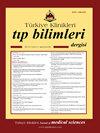Raviye ÖZEN KOCA, Z. I. SOLAK GÖRMÜŞ, H. Solak
{"title":"阿尔茨海默病单胺能系统的改变:传统综述","authors":"Raviye ÖZEN KOCA, Z. I. SOLAK GÖRMÜŞ, H. Solak","doi":"10.5336/medsci.2022-89011","DOIUrl":null,"url":null,"abstract":"Alzheimer’s disease (AD) is an age-related, neurodegenerative disease with characteristic clinical and pathological features. The death rate from AD was exacerbated by the coronavirus disease 2019 pandemic in 2020. The most common neuropathological findings are extraneuronal senile plaques and intraneuronal neurofibrillary tangles. AD is a multisystemic disease that affects many neuronal structures, including monoaminergic systems. Functional changes in neurotransmitters are closely related to the pathophysiology of AD. It is known that many neurotransmitters such as acetylcholine decrease as a result of loss of neuronal synapses and neuronal death. In the monoaminergic system, basically, the substantia nigra nucleus providing the dopaminergic innervation, the dorsal raphe nucleus providing the serotonergic innervation, the locus ceruleus nucleus providing the noradrenergic innervation, and the tuberomamillar nucleus providing the histaminergic innervation are exposed to significant degeneration in AD. There are changes in the levels of relevant neurotransmitters in the regions projected from these nuclei. Combined therapy (cognitive enhancing treatments, drugs to treat neuropsychiatric symptoms, disease-modifying therapies) important to reduce behavioral abnormalities and effectively restore cognitive functions in AD patients. Treatment strategies for AD require understanding the molecular mechanism behind the monoaminergic system. With this traditional review, we aim to discuss in detail the changes that occur in the monoaminergic system, especially in dopamine, noradrenaline, serotonin and histamine mechanisms in AD, and present a perspective on this issue. As a result;more studies in humans and animal models are needed to better understand the signaling mechanism of the monoaminergic system and the effects of monoaminergic receptors. Thus, the development of new treatment strategies for AD will accelerate. © 2022 by Türkiye Klinikleri.","PeriodicalId":49403,"journal":{"name":"Turkiye Klinikleri Tip Bilimleri Dergisi","volume":"1 1","pages":""},"PeriodicalIF":0.0000,"publicationDate":"2022-01-01","publicationTypes":"Journal Article","fieldsOfStudy":null,"isOpenAccess":false,"openAccessPdf":"","citationCount":"0","resultStr":"{\"title\":\"Alterations of Monoaminergic Systems in Alzheimer's Disease: A Traditional Review\",\"authors\":\"Raviye ÖZEN KOCA, Z. I. SOLAK GÖRMÜŞ, H. Solak\",\"doi\":\"10.5336/medsci.2022-89011\",\"DOIUrl\":null,\"url\":null,\"abstract\":\"Alzheimer’s disease (AD) is an age-related, neurodegenerative disease with characteristic clinical and pathological features. The death rate from AD was exacerbated by the coronavirus disease 2019 pandemic in 2020. The most common neuropathological findings are extraneuronal senile plaques and intraneuronal neurofibrillary tangles. AD is a multisystemic disease that affects many neuronal structures, including monoaminergic systems. Functional changes in neurotransmitters are closely related to the pathophysiology of AD. It is known that many neurotransmitters such as acetylcholine decrease as a result of loss of neuronal synapses and neuronal death. In the monoaminergic system, basically, the substantia nigra nucleus providing the dopaminergic innervation, the dorsal raphe nucleus providing the serotonergic innervation, the locus ceruleus nucleus providing the noradrenergic innervation, and the tuberomamillar nucleus providing the histaminergic innervation are exposed to significant degeneration in AD. There are changes in the levels of relevant neurotransmitters in the regions projected from these nuclei. Combined therapy (cognitive enhancing treatments, drugs to treat neuropsychiatric symptoms, disease-modifying therapies) important to reduce behavioral abnormalities and effectively restore cognitive functions in AD patients. Treatment strategies for AD require understanding the molecular mechanism behind the monoaminergic system. With this traditional review, we aim to discuss in detail the changes that occur in the monoaminergic system, especially in dopamine, noradrenaline, serotonin and histamine mechanisms in AD, and present a perspective on this issue. As a result;more studies in humans and animal models are needed to better understand the signaling mechanism of the monoaminergic system and the effects of monoaminergic receptors. Thus, the development of new treatment strategies for AD will accelerate. © 2022 by Türkiye Klinikleri.\",\"PeriodicalId\":49403,\"journal\":{\"name\":\"Turkiye Klinikleri Tip Bilimleri Dergisi\",\"volume\":\"1 1\",\"pages\":\"\"},\"PeriodicalIF\":0.0000,\"publicationDate\":\"2022-01-01\",\"publicationTypes\":\"Journal Article\",\"fieldsOfStudy\":null,\"isOpenAccess\":false,\"openAccessPdf\":\"\",\"citationCount\":\"0\",\"resultStr\":null,\"platform\":\"Semanticscholar\",\"paperid\":null,\"PeriodicalName\":\"Turkiye Klinikleri Tip Bilimleri Dergisi\",\"FirstCategoryId\":\"1085\",\"ListUrlMain\":\"https://doi.org/10.5336/medsci.2022-89011\",\"RegionNum\":0,\"RegionCategory\":null,\"ArticlePicture\":[],\"TitleCN\":null,\"AbstractTextCN\":null,\"PMCID\":null,\"EPubDate\":\"\",\"PubModel\":\"\",\"JCR\":\"Q4\",\"JCRName\":\"Medicine\",\"Score\":null,\"Total\":0}","platform":"Semanticscholar","paperid":null,"PeriodicalName":"Turkiye Klinikleri Tip Bilimleri Dergisi","FirstCategoryId":"1085","ListUrlMain":"https://doi.org/10.5336/medsci.2022-89011","RegionNum":0,"RegionCategory":null,"ArticlePicture":[],"TitleCN":null,"AbstractTextCN":null,"PMCID":null,"EPubDate":"","PubModel":"","JCR":"Q4","JCRName":"Medicine","Score":null,"Total":0}
引用次数: 0
Alterations of Monoaminergic Systems in Alzheimer's Disease: A Traditional Review
Alzheimer’s disease (AD) is an age-related, neurodegenerative disease with characteristic clinical and pathological features. The death rate from AD was exacerbated by the coronavirus disease 2019 pandemic in 2020. The most common neuropathological findings are extraneuronal senile plaques and intraneuronal neurofibrillary tangles. AD is a multisystemic disease that affects many neuronal structures, including monoaminergic systems. Functional changes in neurotransmitters are closely related to the pathophysiology of AD. It is known that many neurotransmitters such as acetylcholine decrease as a result of loss of neuronal synapses and neuronal death. In the monoaminergic system, basically, the substantia nigra nucleus providing the dopaminergic innervation, the dorsal raphe nucleus providing the serotonergic innervation, the locus ceruleus nucleus providing the noradrenergic innervation, and the tuberomamillar nucleus providing the histaminergic innervation are exposed to significant degeneration in AD. There are changes in the levels of relevant neurotransmitters in the regions projected from these nuclei. Combined therapy (cognitive enhancing treatments, drugs to treat neuropsychiatric symptoms, disease-modifying therapies) important to reduce behavioral abnormalities and effectively restore cognitive functions in AD patients. Treatment strategies for AD require understanding the molecular mechanism behind the monoaminergic system. With this traditional review, we aim to discuss in detail the changes that occur in the monoaminergic system, especially in dopamine, noradrenaline, serotonin and histamine mechanisms in AD, and present a perspective on this issue. As a result;more studies in humans and animal models are needed to better understand the signaling mechanism of the monoaminergic system and the effects of monoaminergic receptors. Thus, the development of new treatment strategies for AD will accelerate. © 2022 by Türkiye Klinikleri.

 求助内容:
求助内容: 应助结果提醒方式:
应助结果提醒方式:


